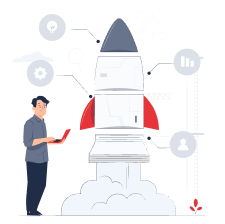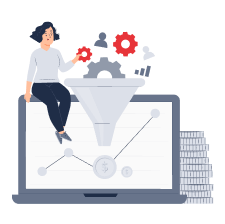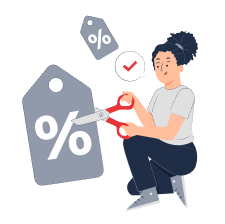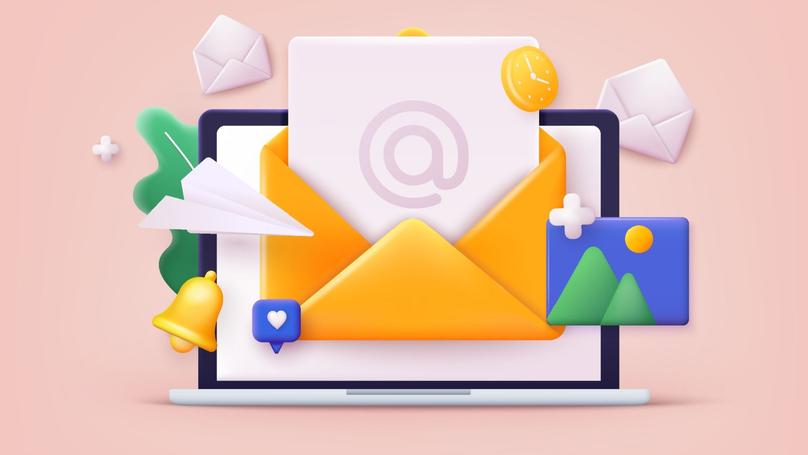Email marketing
What is Email Marketing
Email marketing is a powerful direct marketing channel, meaning it allows you to establish direct contact with a customer. Simply put, email marketing is the practice of sending emails with specific themes or purposes to influence your potential buyers in the way you need. Despite the rise of social media and the impact spam once had on the overall reputation of email marketing, email remains a primary communication channel.
According to statistics, around 93% of internet users have an email address, and 78% use it regularly for personal or business purposes. At the same time, even with the abundance of new features and technologies like AI, the cost of email marketing remains incredibly low-it demands more time than money. The main expense is usually a subscription to an email platform. That's why the value of email marketing cannot be overstated: without it, your business's chances of success drop dramatically. A well-crafted email campaign helps businesses achieve the following goals:
-
Turn your subscribers and readers into actual customers.
-
Expand your customer base and raise awareness about your company or products.
-
Boost brand recognition and audience engagement.
-
Inform customers about new arrivals and promotions.
-
Drive short-term sales (such as during a promotion).
-
Encourage repeat purchases.
It can also be B2B email marketing, meaning business-to-business marketing, if you're focused on partnerships or your main clients are other agencies (like equipment, material, or services for online stores, etc.). Integrating email marketing into a company's overall marketing plan offers several undeniable and unique advantages:
-
Emails convert better than anything else. Customers who regularly receive a store's emails spend 138% more than those who don't.
-
The ROI (Return on Investment) for email marketing averages 4000%!
-
Email marketing requires minimal investment - there are many affordable and even free tools available today, which we'll cover below.
-
Email marketing is easy to tailor to your business needs, set up, and adjust as necessary. Plus, customers can unsubscribe from newsletters anytime, meaning your mailing list self-regulates and stays free of "dead" subscribers.
-
Email campaigns are highly informative thanks to the ease and speed of collecting statistics on all user interactions.
Important! Email marketing should only be used when you have a substantial customer base, as this ensures it will pay off.
Types of Mailings
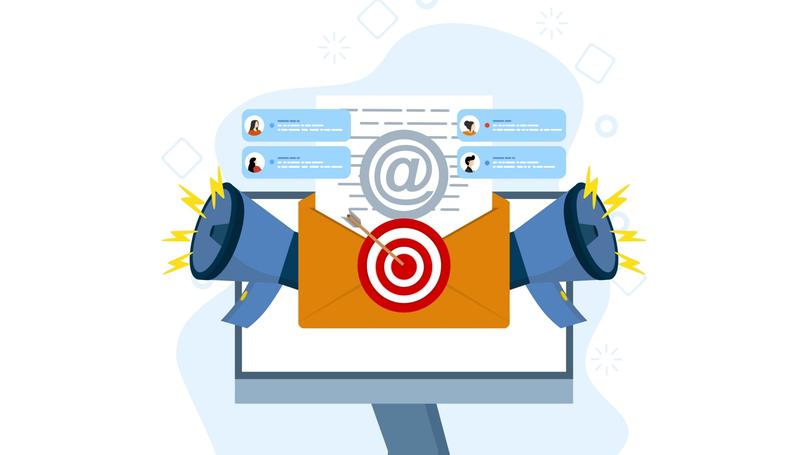
Types of email marketing represent the different kinds of email campaigns you can create and run. The following types of newsletters are especially popular:
-
Welcome letter series
When you gain a new subscriber, you must immediately send them a welcome series that includes a greeting and an introduction to your company-its core, products, and offers. Typically, this series includes 3 to 5 emails that gradually introduce the newcomer to the business, unveil your brand, and help you get to know each other.
-
Advertising campaign
Classic marketing, only implemented via email. For example, if you have a new product in stock, you immediately inform your customers with the most selling and bright letter. The main rule of such mailing is not to overdo it. Companies often make the mistake of sending 10 promotional emails in a row. But, firstly, they must alternate with other types of letters and be sent no more than 2-3 times a week. Secondly, such letters should be related and contain helpful information for the subscriber. This will increase the effectiveness of your advertising campaign.
-
Seasonal campaign
These emails are sent within a specific period-like during sales or holidays. So, for example, at Christmas, your emails should not only be visually festive (snowflakes, stars, Christmas trees) but also include relevant information and offers (Christmas-related products or "How to make this Christmas unforgettable?"). According to the National Retail Federation, holiday sales account for up to 20% of all annual retail sales! That's why this kind of email should not be overlooked.
-
Series of emails with a CTA
You can guide a subscriber toward a specific action using a series of emails. For example, inviting them to join your Facebook community or buy a product you need to promote. The first email usually contains valuable content that identifies the subscriber's problem and shows that you have a solution. Then, you introduce a lead magnet-like a trial version of that solution. After that comes your offer, with a CTA like: "Buy now and forget the problem forever!"
-
Post-sales newsletter
Just because someone has already made a purchase doesn't mean you should forget about them! For instance, if they bought a gas burner, follow up with something like "How to Use a Gas Burner: 10 Great Tips." This boosts engagement with your brand and builds trust on an emotional level, helping form a long-term relationship so the customer returns. It also boosts cross-selling!
-
Newsletter
A regular newsletter or digest is key to staying connected with your audience before and after a service. Keep your followers updated with niche news and educate and entertain them. This format complements any advertising campaign and builds audience trust.
-
"Return" email series
Usually, one or two emails remind users that they added something to their cart but didn't complete the purchase. These emails help close the deal in 67% of cases. The key is to include a lead magnet, like: "You haven't finished your order. Here's 10% off!"
-
Reactivation emails
On average, 25-30% of subscribers unsubscribe yearly from company mailings. If some subscribers haven't read your letters for over 3-4 months, you can remove them from the database to keep it relevant or try to "revive" them with a special newsletter. So, the email marketing goal in this case is to remind them about you! You should use the same lead magnet (preferably a discount) along with helpful information and an appropriate subject line like: "It's been a while-how have you been?"
All email campaigns can be automated so that the right message reaches the customer at the right time-without your direct involvement. That's also what makes email marketing one of the most convenient forms of marketing today.
Strategies for Effective Email Marketing
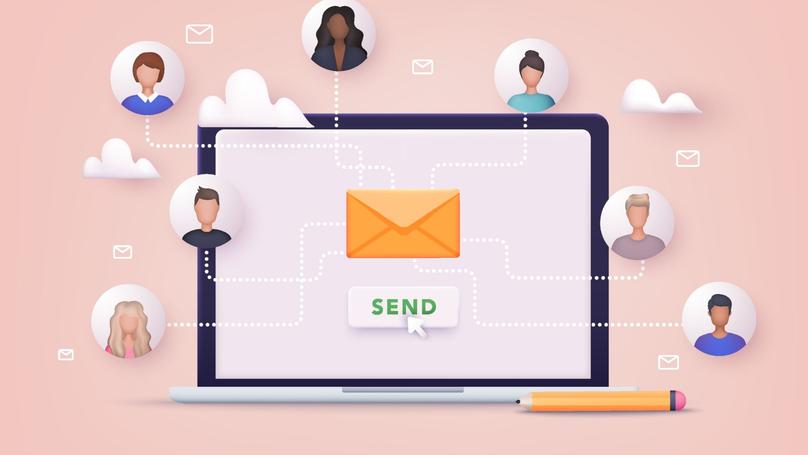
To launch truly effective email marketing, you need a combination of different strategies-there are plenty, and each task serves its purpose. We recommend starting with the following four, which can be combined or alternated:
-
Personalization
In an age of fierce market competition and brand diversity, customers expect a personalized approach that reflects their wants, needs, and interests. That's why personalized email campaigns are ten times more effective than generic ones. Divide your audience into 4-6 segments (depending on its size), and tailor specific topics and directions for each one. For example, if you run a clothing store and one of the segments includes a young audience aged 18 to 25 that prefers a sporty style, you should promote relevant products to them-not business suits or leopard-print dresses.
-
Interactivity
According to a Salesforce study, 68% of customers are more likely to engage with emails that contain interactive elements. These include:
-
Animation and dynamic effects in email design
-
AMP (accelerated mobile pages technology)
-
Gamification (e.g., a link to a short online game to get a discount)
-
Advanced mailing preferences (not just unsubscribe, but also choosing categories of interest, etc.)
The more "modern" and tech-savvy your email looks, and the more ways there are to interact with it, the better the results. After all, this is all part of digital marketing. Design matters, too-it should be bold, trendy, and original.
-
Greeting and thank-you emails
A study by Experian claims that birthday emails can boost revenue by 342% compared to businesses that don't acknowledge this special day. Both celebratory and thank-you emails increase loyalty and engagement, so be sure to send your clients:
-
greetings on major and meaningful holidays
-
anniversary messages
-
emails with exclusive offers for holidays and seasons
-
thank-you emails for staying with you or actively engaging with your brand
-
Review of competitors using test inboxes
In any business, it's important to stay on top of trends, and keeping an eye on competitors is a great way to do it. This gives you real-life examples of email marketing in action, helps you gather ideas, understand your audience's interests, track market direction, and-crucially-avoid the mistakes you might spot in others' campaigns. It's an alternative to user surveys: by identifying common features in competitor emails, you'll already have insight into what your audience wants. In short, while your competitors are testing and evolving, you're evolving through them.
To run this kind of competitor email audit, you need to:
-
Identify companies you compete with for the same target audience-or those you want to emulate (as long as you share or closely match the audience).
-
Create test inboxes under a fictional user.
-
Subscribe to their newsletters, and every time you get a new email, analyze its content quality, links, themes, style, etc. You can also rate each email on a scale from 0 to 10, where 10 means "Even I feel like buying something from this email!"
-
Record and organize the takeaways in a spreadsheet, and then apply the best ideas to your next email.
Checklist "Setting Up Email Marketing"
Here's a quick checklist to help you visualize the steps of creating a campaign and make sure you haven't missed anything:
-
Technical Setup: DKIM, DMARC, and SPF records, Postmaster connection, spam complaint reports, sender avatars, domain connection-make sure all of this is in place.
-
Recipient List: Verify that your list includes only valid, working emails and that users have consented to receive emails.
-
Layout: Use pre-made or custom templates to structure your email properly. Make sure it's mobile-friendly (many people read emails on their phones), and keep the size under 600 KB. Add alt text for images, check variable fields, and remove unnecessary spaces from the HTML version.
-
Design: Ensure your email follows your brand's visual identity. Include your logo and a banner, check text readability in all versions, use no more than three fonts, and include spacing between sections.
-
Subject & CTA: The sender name should be your company's name, the subject line should be short, clear, and reflect the email content; and the preview text should be no longer than 50 characters. Include no more than two links unless it's a catalog page.
-
Sending: Make sure the right segment is selected among the recipients. Test the email by sending it to your inbox and mobile devices first.
Key Metrics in Email Marketing
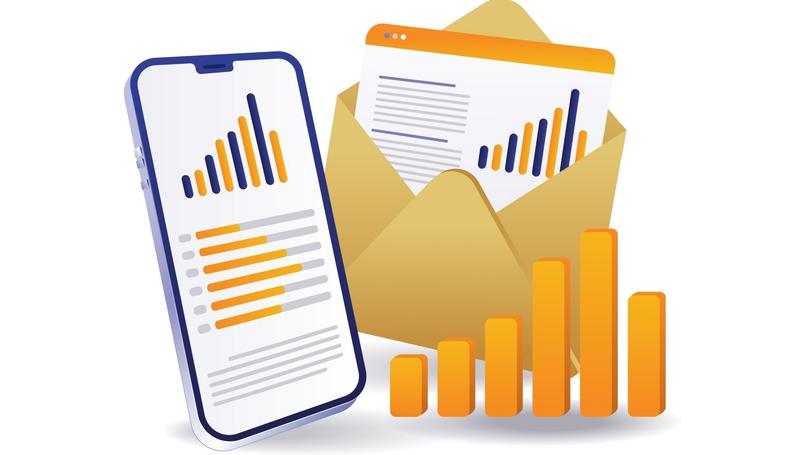
You should regularly analyze the performance of each campaign so you can adjust and improve it in time. The most important metrics include:
-
Delivery Rate. This is the ratio between emails sent and those successfully received by users. This metric helps you understand how well letters pass spam filters and whether all email addresses in your contact database are current. If the Delivery Rate is low, the problem lies in spam filters or outdated email addresses.
-
Open Rate. This metric shows how many recipients opened your email and expressed interest in it. This metric helps evaluate the appeal of your subject line and how well the content matches the target audience.
-
Click Through Rate or Click to Open Rate. It measures how many users click on links within your email (e.g., to buy a product). This shows how relevant your offer or content is to your audience.
-
Unsubscribe Rate. This is the percentage of recipients who unsubscribed after receiving your email. If indicators show high numbers, it's a sign that you may need to reconsider the newsletter's content or review the audience (perhaps the segment was incorrectly formed).
-
Conversion Rate. It gives the clearest picture of campaign success in terms of sales and potential profit. It shows who opened the email and who took the intended action-like downloading a file, making a purchase, or registering for a webinar.
-
Return on Marketing Investment. This metric shows how much revenue your campaign brought in relative to its cost. If your email marketing isn't paying off, it must be reworked.
Most email marketing platforms automatically collect, analyze, and present these metrics for your review.
Tools and services

Today, there are so many tools and platforms for automating and managing email campaigns that everyone can find something to suit their taste. But if you can't navigate the options and want to avoid making a mistake, start with this list-these are the most proven email marketing tools:
MailChimp is the most popular email marketing platform, offering versatile and flexible tools that are easy to learn. The service also integrates easily with WordPress, Magento, and other platforms. It includes a letter designer, audience segmentation, an autoresponder, and analytics with near real-time statistics. You can set up mailings not only by scheduled time but also by the geolocation of subscribers.
MailChimp offers both free and paid subscriptions. The free plan is ideal for small businesses but has limitations: It allows up to 12,000 monthly emails to 2,000 subscribers. The price of the paid subscription starts at $10.
Constant Contact is famous for its vibrant turnkey templates, allowing you to create truly unique email campaigns. Each user has access to performance tracking and reporting. You can also share your campaigns on social media, use images from the Constant Contact library, and store your files here-as if in cloud storage.
Constant Contact is also known for its support, including 24/7 chat and online training that helps you grasp the basics of email marketing. The first 60 days are free, but after that, you'll need to choose one of the paid plans, which start at $20 per month.
ConvertKit is a favorite among professional bloggers, authors, and marketers. It offers simple yet powerful functionality, including ready-made outreach forms, autoresponder management, segmentation, and flexible automation tools. Study materials are also included.
A ConvertKit subscription costs $29 per month, but you can get a refund within 30 days if you're not satisfied with the platform.
Unisender stands out for its intuitive interface and ability to work with SMS and Viber campaigns. It also helps you grow your list through sign-up forms and social media. It offers built-in A/B testing and a free plan that allows 100 contacts and 1,500 emails per month. Paid plans start at just $7 per month.
Email marketing is a universal way to boost sales and brand awareness, warm up your audience, and drive engagement. When combined with other marketing channels, email campaigns can deliver incredible results. It's no wonder all major and well-known companies rely on them! The key is to pick the right tools and not be afraid to experiment-after all, you never know which strategy will hit the mark.
Conclusion
Email marketing is the business world's perpetual motion machine and an endless source of new leads, subscribers, and customers. Today, almost everyone has at least one email account (often two or three!) and is open to receiving emails. Of course, that doesn't mean every user will read every message, but email marketing also serves as a reminder, keeping your brand at the top of potential or past customers' minds. It lays the foundation for long-term relationships and makes it easier to reignite interest even after a deal is done.
No matter how many new online promotion methods emerge, thanks to its versatility, accessibility, and customizability, this type of marketing will never die out. And if you want to master it, you can always take classes or join online email marketing courses - like the one from Lectera.










